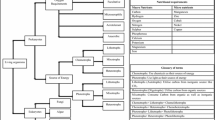Abstract
Advances over the past 35 years in terms of minimizing impact to the environment by containment, collection, and treatment of contaminants as well as by minimizing the generation of contaminants are highlighted in this keynote lecture. The lecture examines past advances in understanding hydraulic conductivity of soils (both clayey and granular soils) permeated by contaminated fluids. And the lecture considering the present, the substantial use of geo-membranes in fluid containment and the advances in construction quality assurance to minimize holes are examined, as well as Looking to the future, the lecture highlights the need for taking a systems approach to environmental geotechnical design.
Access provided by Autonomous University of Puebla. Download conference paper PDF
Similar content being viewed by others
Keywords
1 Research Background
As a discipline within the broader context of geotechnical engineering, environmental geotechnics can trace its roots back to the early days of soil mechanics and the work on flow through soil and compaction of soil to achieve low permeability (e.g., in earth dams). However, over about the last 35 years, environmental geotechnics has evolved considerably and one might wonder if it has now matured or if there are still significant challenges to address?
2 Research Content
This lecture highlights some of the advances over the past 35 years in terms of minimizing impact to the environment by containment, collection, and treatment of contaminants as well as by minimizing the generation of contaminants. The effect of clay-leachate interaction on increasing clay liner permeability and of biologically induced processes (clogging) on decreasing the permeability of granular drainage layers are discussed. It then highlights importance of contaminant diffusion in well-designed low leakage, or zero leakage, barriers.
Considering the present, the substantial use of geomembranes in fluid containment and the advances in construction quality assurance to minimize holes are examined. The leakage that might be expected with good CQA for different types of liner systems and wrinkle networks are touched upon and the role of leak detection surveys in reducing leakage is examined. Since geo-membranes are commonly used as part of a composite liner with a geo-synthetic clay liner (GCL), the lecture touches on some construction issues requiring much more awareness in the industry because of their implications for system performance.
Looking to the future, the lecture highlights the need for taking a systems approach to environmental geotechnical design. It highlights how the optimization of one component of a barrier system (e.g., a drainage layer) can have a negative effect on another component (e.g., a geo-membrane liner) if there is inadequate appreciation of the interactions between the two and how well-intentioned optimization of a component can degrade the overall system performance. The lecture discusses the often underestimated, and sometimes overlooked, interaction between the waste and the barrier system and the impact it can have on the long-term performance of a geo-membrane liner. However, not all interactions are negative! The lecture identifies positive interactions between geo-membranes and adjacent materials that can substantially reduce leakage and discusses the factors still requiring further detailed investigation in this area. Finally, the increasing role being played by geo-membranes as a diffusive-advective barrier used in the containment of hydrocarbon spills and in the remediation of contaminated land is discussed with an emphasis on new geo-membranes being developed for this role and it illustrates their use in Antarctica.
3 Conclusions
By reviewing the state of art in Environmental Geotechnics, this lecture highlights the advances over the past 35 years in terms of minimizing impact to the environment by containment, collection, and treatment of contaminants as well as by minimizing the generation of contaminants.
Author information
Authors and Affiliations
Corresponding author
Editor information
Editors and Affiliations
Rights and permissions
Copyright information
© 2019 Springer Nature Singapore Pte Ltd.
About this paper
Cite this paper
Rowe, R.K. (2019). Environmental Geotechnics: Past, Present and Future?. In: Zhan, L., Chen, Y., Bouazza, A. (eds) Proceedings of the 8th International Congress on Environmental Geotechnics Volume 1. ICEG 2018. Environmental Science and Engineering(). Springer, Singapore. https://doi.org/10.1007/978-981-13-2221-1_12
Download citation
DOI: https://doi.org/10.1007/978-981-13-2221-1_12
Published:
Publisher Name: Springer, Singapore
Print ISBN: 978-981-13-2220-4
Online ISBN: 978-981-13-2221-1
eBook Packages: Earth and Environmental ScienceEarth and Environmental Science (R0)




